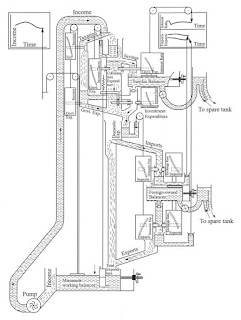In this case, apart of this use, it is also useful imbalance in the balance.
Many years ago (2003), Wendy Petti of MathCats.com and me, we developed the "MathCats Balance":
" choose from a wide range of objects to place on this scale - from electrons to galaxies! "
" So how can we balance thin cats with fat cats? You might try multiplying each side by the number shown on the opposite side of the balance. Will 2 x 6 thin cats balance with 5 fat cats? Yes, 12 thin cats do balance with 5 fat cats".
MathCats Balance App (Google Play)
MathCats Balance (Amazon)
Many years after this, I developed under the same idea a pan balance of fractions.
Inspired in a old photograph of Maria Montessori and his son Mario:
( from Getty Images: www.gettyimages.es/fotos/maria-montessori )
Pan balance to weigh fractions:
This imbalance, when the imbalance ratio under certain conditions is proportional to the ratio of content of the dishes, is also the result of the division. The slope of a straight line. In this case, the result of the division of fractions.
To view it, you can multiply the contents of each dish, until the balance is obtained, the numbers for which has multiplied each dish are in turn the result fraction of the division.
The program only multiply by prime numbers, because any number can be built with them.
This is the "Fractions Balance" Android App:
1/2 + 1/3 + 1/6
with: 1/3 + 1/5 + 1/6 + 1/8 + 1/10 + 1/12
And with: 1/3 + 1/4 + 1/5 + 1/8 + 1/12
I hope it helps on teaching division of fractions.




























